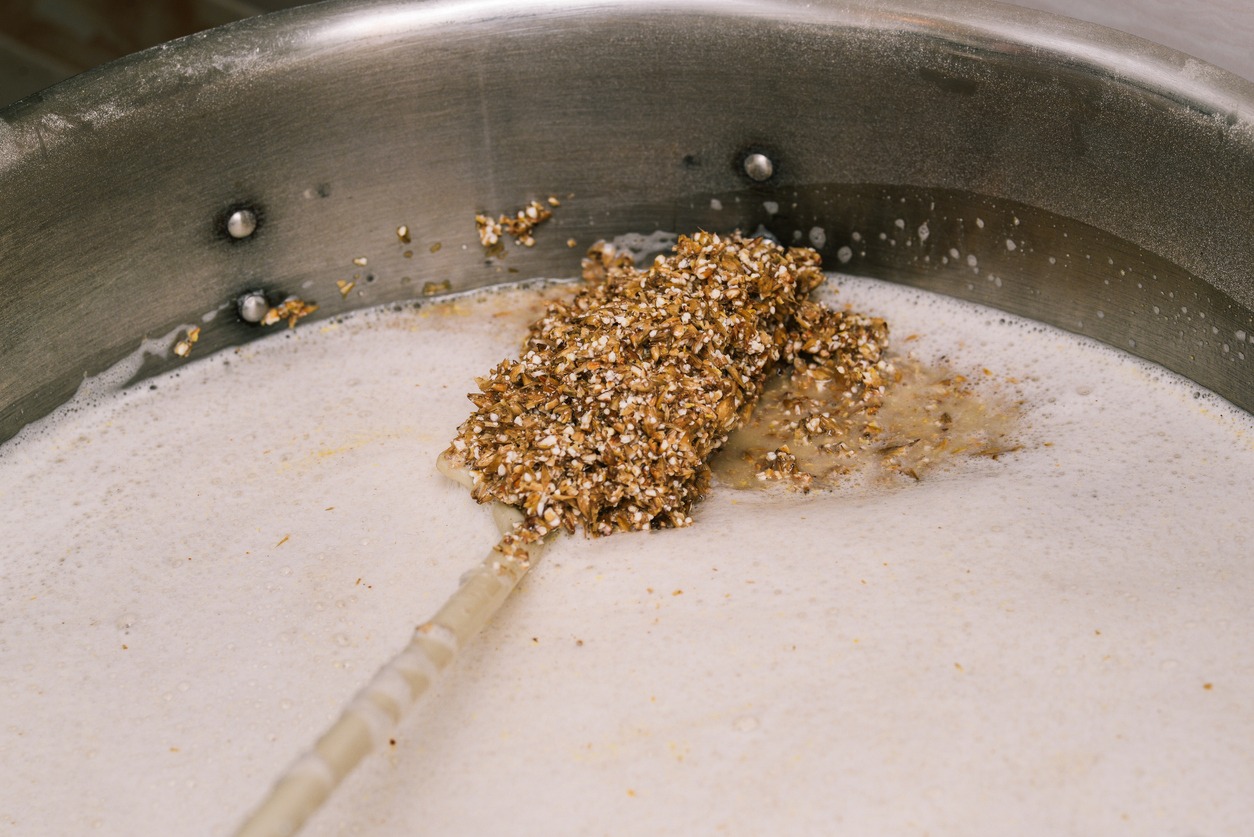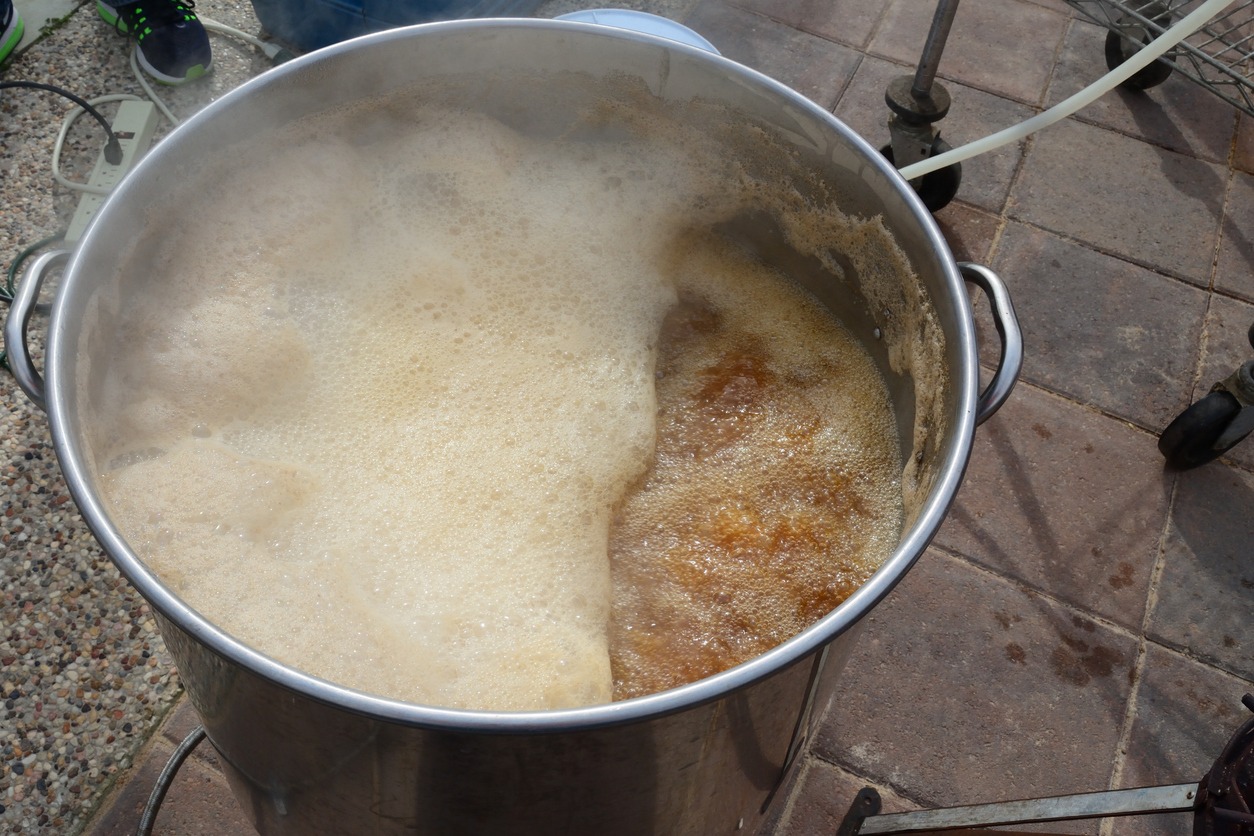In the 15th century, the beer-making process involved malting grains, mashing process, and boiling with hops.
There were unique fermentation methods shaped by regional differences, added complexity to the beers. Learning about these historic practices gives us insight into the rich tradition of beer-making.
Malting the Grains
Beer making began with the intricate process of malting grains such as barley, wheat, oats, or rye. This process started by soaking these grains in water to initiate germination. The soaking phase was crucial as it set the stage for these enzymatic activities.
As germination began, the grains were meticulously monitored to maintain optimal temperature and humidity. This careful management was essential for developing the desired flavors and ensuring the fermentability of the beer. After a specific period, germination was stopped by drying the grains using heat. This drying process stopped enzyme activity at the precise moment needed to preserve fermentable sugars for brewing.
The quality of the malted grains directly influenced the beer’s taste and its fermentability. Skilled labor was key in the 15th century to effectively manage the malting process. Each type of grain imparted unique characteristics to the beer, contributing to the various flavors and textures that defined the brews of that time.
Mashing Process
The mashing process, crucial in 15th-century beer making, involved soaking crushed malted barley in hot water to extract fermentable sugars. Brewers placed the crushed malt in large wooden vessels or cauldrons, then added hot water. This mixture, known as the mash, required careful temperature control to activate the enzymes in the malt.
These enzymes were essential for converting the barley’s starches into fermentable sugars, a key step for fermentation. Constant stirring ensured even heat distribution and thorough mixing. The temperature had to be just right—too hot would destroy the enzymes, while too cold would make them ineffective.
Mashing typically lasted several hours, giving the enzymes time to break down the starches completely. Once the sugars were extracted, the liquid portion, called wort, was separated from the spent grains. The wort then moved on to the next stages of beer-making, while the spent grains were often used as animal feed.
Mastering the mashing process was critical for producing a wort rich in sugars, providing a solid foundation for successful fermentation.
Boiling With Hops
During the 15th century, brewers began boiling the malt and water mixture with hops to enhance flavor and ensure preservation. What are hops? Hops are the flowers (also called seed cones or strobiles) of the hop plant, Humulus lupulus.
Boiling was crucial because it allowed the hops to release distinctive bitterness and aroma into the beer. This process not only improved the flavor but also extended the beer’s shelf life by preventing spoilage.
When hops are added during the boiling stage, they release essential oils and acids. The heat extracts these compounds, which contribute to the beer’s bitterness and aroma. This bitterness balances the sweetness of the malt, creating a more complex and enjoyable flavor.
Though hops had been used in brewing since the 9th century, their consistent inclusion by the 15th century was transformative. Boiling with hops marked a significant evolution in brewing, ensuring that the final product not only tasted better but also lasted longer.
Fermentation Techniques
Brewers transformed malt into beer using open vessels and homemade sourdough starters for fermentation. Traditional brewing methods relied simply on grain fermentation with water and yeast to produce a type of beer called ale. The homemade sourdough starter provided the necessary yeast for fermentation.
Ale production often took place in household pots and pans, showcasing the simplicity of ancestral brewing practices. Brewers soaked grains until they sprouted, creating malt, which they then mixed with water to produce a sugary wort.
The open vessels allowed natural fermentation to take place, exposing the mixture to wild yeasts and microbes. This method didn’t involve hops, focusing solely on the interplay of grain, water, and yeast. By adhering to these age-old methods, 15th-century brewers were able to produce distinct, flavorful ales using the simplest of ingredients and equipment.
Regional Variations
In the 15th century, beer-making varied across Europe, with each region using unique ingredients and methods. Here’s a look at how some regions brewed their beer:
Germany: Brewers often used a mix of barley and wheat, resulting in lighter, crisper beers. Hops were common, giving German beers their distinctive bitter flavor.
England: Mainly used barley and sometimes oats, creating darker, richer ales. Instead of hops, they often used herbs like yarrow and mugwort for flavor.
Belgium: Used spontaneous fermentation, relying on wild yeasts in the environment. This produced beers with a tart, complex character.
These regional techniques led to a variety of flavors, showcasing the diverse brewing practices of medieval Europe. Understanding these variations offers a glimpse into the rich history of beer-making.
Conclusion
The process of brewing beer in the 15th century involved several key steps: malting, mashing, boiling with hops, and unique fermentation techniques.
Each region had its own variations, using local ingredients and methods. This rich history not only produced diverse flavors but also laid the foundation for modern brewing.
Understanding these age-old practices allows for a deeper appreciation of the art and science behind every pint. Cheers to the brewers of the past!


